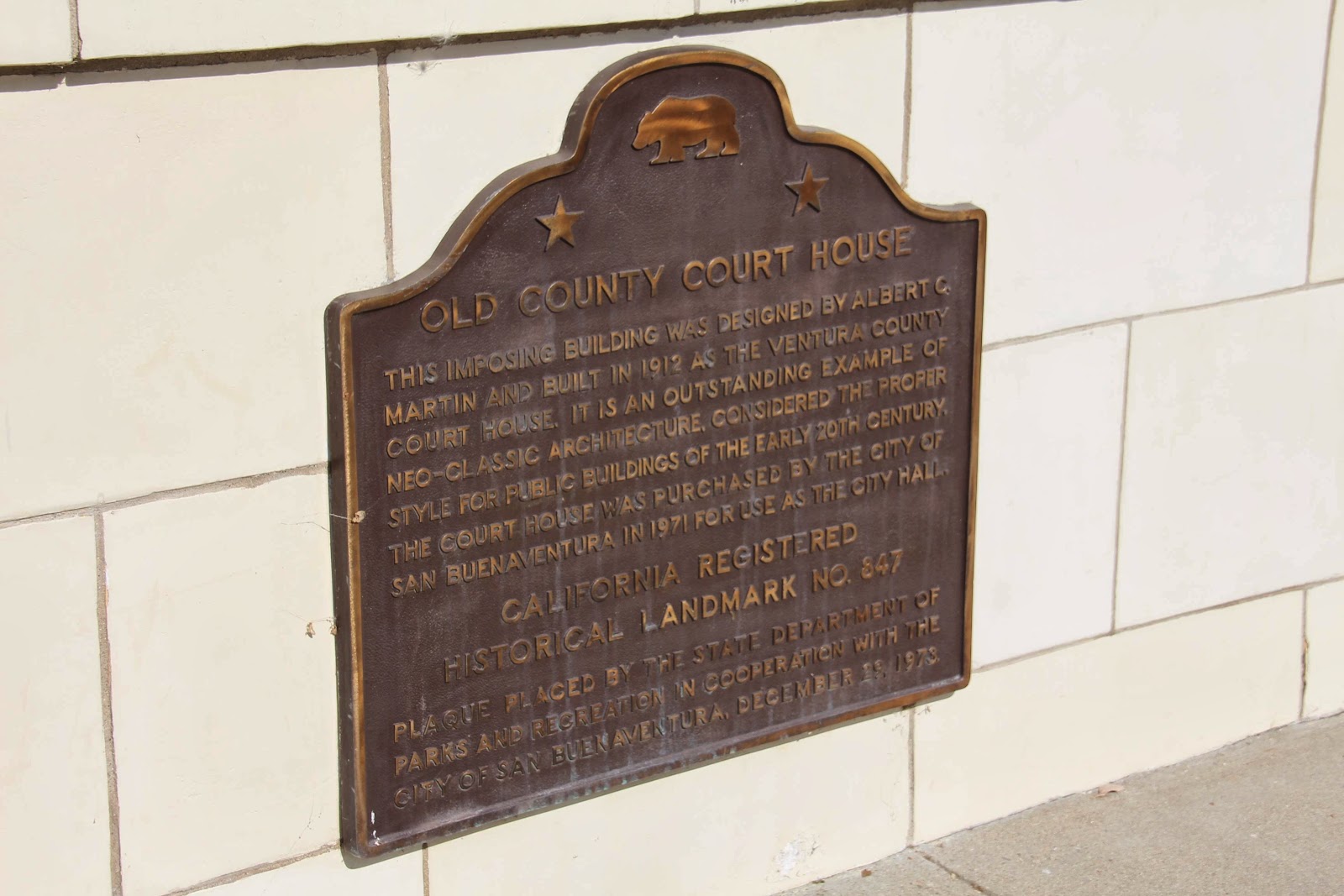Another interesting fact about their bells-- the bells that currently reside in their bell-tower were originally borrowed from Mission Santa Barbara, but they never returned them.
The interior of the mission was extremely dark-- much like it would have looked during the mission days. Luckily my camera sucked in enough light from the windows that I was able to get a few good shots without flash!
This mission sanctuary is quite small, but 2000 people still call this their church home!
I think that taking a photo in the mission courtyard with a fountain is going to be a tradition for us.
Here is a photo of the bell-tower on this gorgeous Southern California January day! There is one bell that still rings daily, it is inscribed with 'Hail Mary Most Pure. Mary of Zapopan Year of 1825." This bell was originally cast for the church of Zapopan, but was later sent to the mission.
Another obligatory photo with Fr. Serra! Libi's comment, "We've seen this guy before." Yes, my dear. We will see him at every mission.
Interestingly, this mission was supposed to be the third one built, but due to postponement it is actually the 9th mission built.
There is another CHL on the grounds of the mission that actually connects to one we saw months ago... the Old Mission Reservoir (CHL114). The priests put the local Chumash people to work building an elaborate system of aqueducts to bring fresh water to the mission. We saw the last remaining piece of the aqueduct in this post in October.
After our very brief self-guided tour we headed across the street to take photos of the building.
Here is a side by side of Libi and I at the mission. Libi's photo is from yesterday age 7, mine is from 1986 when I was around 9. It's so funny to me that we were both standing in virtually the same spot almost 30 years apart. For the record, I found this photo of myself after the fact, so we didn't purposefully stage these to be so similar.
It was a lovely morning at the mission!
Our next stop was the Ventura County Courthouse building (CHL 847). The reliefs on the side of the building look like something out of the Haunted Mansion...
We expected them to start singing to us at any moment, but sadly they just stared down at us.
The courthouse (which is now City Hall) was very quiet on this Saturday morning, which made it perfect for lots of photos.
The building was designed in 1910 by Albert C. Martin, Sr. using a neoclassical style.
The building was condemned due to earthquake damages, but was purchased by the city and repaired. Thank goodness this gorgeous building wasn't' lost!
Next we left the city of Ventura and went to Newbury Park to the Stagecoach Inn (CHL 659).
This hotel was built in 1876, but burned to the ground in 1970. It was completely restored using only hand tools and re-opened in 1976. It had many names when it was a hotel-- The Grand Union Hotel, El Hotel Grande,The Conejo Hotel, and the Stagecoach Inn.
It is a great site-- with lots to see and do. I even took my fifth grade students here for a field trip years ago!
One of the most fun things about this site is that all the docents (many of whom are retired school teachers) are dressed in period costume. They even had a junior docent who was 11 years old who gave us a tour of the kitchen.
They don't allow any photography inside the hotel, but it was full of interesting displays-- a room full of phonographs, one of human hair art, dresses from the 1800's, and lots of photos and antique furniture.
They have a barn full of stage-coaches and tools. Here Ron is holding a brake that was put on the wagons when they were coming down steep grades to help the driver not lose control.

After a fun few hours at Stagecoach we rushed over to Rancho Simi (CHL 979). This site was closing at 4 p.m. so we wanted to have at least an hour to explore the grounds.
When we walked onto the site we were all impressed-- the grounds were large with lots of buildings. Sadly, the docents were not very kind-- shoving us in front of a video, telling us there was nobody to show us the buildings (even though a docent in the back offered to take us), and then pushing us through the grounds so she could lock up. It left a really bad taste in our mouth, so be careful when you go. I would suggest going when they first open and hopefully they will be more hospitable!
We did get to see the outside of the building-- inside this house two rooms of the original adobe that was built in 1892 still remain.
Our final Ventura County site was one of the 20th Century Fold Art Environments. You might remember the first one, which totally creeped out Libi.
Today we saw Grandma Prisbrey's Bottle Village (CHL 939). Tressa Prisbrey, a 60 year old began using recycled bottles and items from the dump to build "shrines, walkways, sculptures, and buildings" from 1956 to the early 80's.
It was all locked up today, but they do give tours on occasion-- which would be fascinating to attend.
I don't think Libi spotted this sculpture or she might have given it a thumbs down just like the last 20th century folk artist.
So now, we have completed Ventura, Stanislaus and Merced counties! We rock!























































